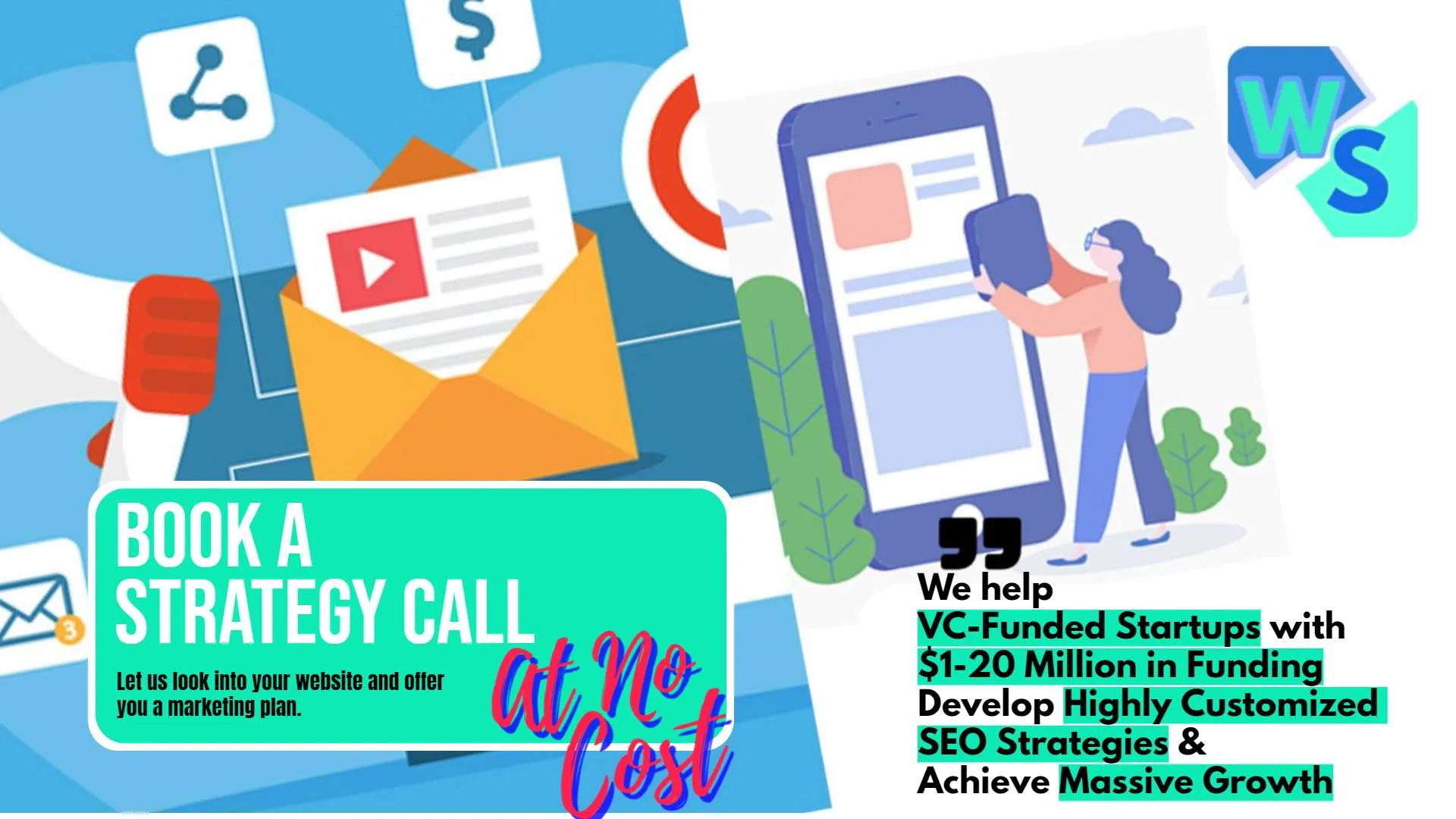Running a small business comes with its own set of challenges, especially when it comes to marketing. With limited budgets and resources, finding innovative ways to promote your products or services is crucial. The good news is that there are numerous creative and cost-effective marketing strategies that can help small businesses stand out and attract customers. This article explores various innovative marketing tactics that are easy to implement and can yield significant results. Ready to boost your business? Let’s dive in!
Understanding Your Audience
Conduct Deep Market Research
For startup founders, deep market research is not just a one-time task but an ongoing process. Start with primary research methods such as surveys, interviews, and focus groups to gather firsthand information about your target market. Secondary research, such as studying industry reports and competitor analysis, can provide additional insights.
Use tools like Google Trends, SEMrush, and social media analytics to track trends and understand what topics resonate most with your audience. This comprehensive approach ensures you are well-informed about market dynamics and customer preferences.
Analyze Customer Data
Customer data analysis is crucial for understanding your audience. Use analytics tools to track user behavior on your website and social media channels. Look at metrics such as page views, time spent on site, bounce rates, and conversion paths. Identify patterns and trends that can inform your marketing strategies.
For instance, if you notice that a particular blog post generates a lot of traffic, you can create more content around that topic. Tools like Google Analytics, Hotjar, and Crazy Egg can provide valuable insights into how users interact with your site and what drives them to convert.
Leverage Social Listening
Social listening involves monitoring social media channels for mentions of your brand, competitors, and relevant keywords. This can provide real-time insights into what your audience is talking about and how they feel about different topics. Use tools like Hootsuite, Sprout Social, and Brandwatch to track conversations and sentiment.
This information can help you identify emerging trends, understand customer pain points, and adjust your marketing strategy accordingly. By staying attuned to the social media landscape, you can engage more effectively with your audience and address their needs proactively.
Create Hyper-Personalized Experiences
Personalization goes beyond addressing customers by their first name. Use the data you collect to create hyper-personalized experiences that cater to individual preferences and behaviors. Segment your audience based on factors such as purchase history, browsing behavior, and engagement levels.
Develop tailored marketing messages and offers for each segment. For example, if a customer frequently purchases from a particular product category, send them personalized recommendations and exclusive discounts for that category. Hyper-personalization can significantly enhance customer satisfaction and loyalty, driving higher conversion rates.
Develop a Customer Journey Map
A customer journey map outlines the different stages a customer goes through when interacting with your brand, from awareness to purchase and beyond. Mapping out this journey helps you understand the touchpoints where customers engage with your brand and the emotions they experience at each stage.
Identify potential pain points and opportunities to enhance the customer experience. Use this map to design targeted marketing campaigns that address customer needs at each stage of their journey. By aligning your marketing efforts with the customer journey, you can create a more cohesive and effective strategy.
Engage in Community Building
Building a community around your brand can deepen your connection with your audience. Create spaces where customers can interact with your brand and each other, such as social media groups, online forums, or local meetups.
Foster a sense of belonging by encouraging discussions, sharing valuable content, and responding to feedback. Community building can turn customers into brand advocates who promote your business organically. It also provides valuable insights into customer preferences and challenges, helping you refine your marketing strategies.
Use Predictive Analytics
Predictive analytics leverages data to forecast future customer behaviors and trends. Use tools like IBM Watson, Salesforce Einstein, and Microsoft Azure to analyze historical data and identify patterns. Predictive models can help you anticipate customer needs, optimize marketing campaigns, and make informed decisions about product development and inventory management.
For example, if predictive analytics indicate a surge in demand for a particular product, you can adjust your marketing efforts to capitalize on this trend. This strategic use of data can give you a competitive edge and drive growth.
Conduct A/B Testing
A/B testing involves comparing two versions of a marketing asset to see which one performs better. Use A/B testing to optimize various elements of your marketing campaigns, such as email subject lines, ad copy, landing pages, and call-to-action buttons.
By systematically testing different variations, you can identify what resonates most with your audience and refine your strategies accordingly. Tools like Optimizely, VWO, and Google Optimize can help you run effective A/B tests and gather actionable insights.
Foster Emotional Connections
Emotional connections can be a powerful driver of customer loyalty and advocacy. Identify the emotions that resonate most with your audience and incorporate them into your marketing messages. Use storytelling to create compelling narratives that evoke emotions and connect with customers on a deeper level.
Highlight customer testimonials, success stories, and behind-the-scenes content to humanize your brand and build trust. Emotional marketing can differentiate your brand and create lasting bonds with your audience.
Monitor and Adapt
Understanding your audience is an ongoing process that requires continuous monitoring and adaptation. Regularly review your marketing analytics and customer feedback to stay informed about changing preferences and behaviors.
Be agile in your approach, ready to pivot your strategies based on new insights. By staying attuned to your audience and being responsive to their needs, you can maintain a strong connection and drive sustained growth for your business.
Leveraging Social Media

Develop a Comprehensive Social Media Strategy
For startup founders, having a comprehensive social media strategy is crucial. Begin by defining your social media goals. Are you looking to increase brand awareness, drive website traffic, generate leads, or boost sales? Clear goals will guide your content creation and engagement efforts.
Perform a social media audit to assess your current presence and identify areas for improvement. Analyze your competitors to understand what works in your industry. This strategic approach ensures you’re not just posting content randomly but working towards specific objectives that align with your business goals.
Create High-Quality Content
Content is the backbone of your social media strategy. Invest in creating high-quality, visually appealing content that resonates with your audience. This includes professional photos, engaging videos, and well-designed graphics. Use storytelling to make your content more compelling.
Share behind-the-scenes looks at your business, customer success stories, and case studies. High-quality content not only attracts more followers but also encourages sharing, increasing your reach and visibility.
Utilize User-Generated Content
User-generated content (UGC) can be a powerful tool for building trust and engagement. Encourage your customers to share their experiences with your products on social media. Feature their posts on your channels to show appreciation and create a sense of community.
UGC acts as social proof, demonstrating that real people love your products. Run campaigns or contests to motivate users to create content. This strategy not only generates authentic content but also strengthens your relationship with customers.
Implement Social Listening
Social listening involves monitoring social media channels for mentions of your brand, products, and industry-related keywords. Use tools like Hootsuite, Sprout Social, and Brandwatch to track conversations and gather insights.
Social listening helps you understand public sentiment, identify trends, and respond to customer feedback in real time. It also allows you to engage in meaningful conversations and build stronger relationships with your audience. By staying tuned to what people are saying, you can address issues promptly and capitalize on opportunities.
Host Interactive Live Sessions
Live video is an excellent way to engage with your audience in real-time. Host live Q&A sessions, product demonstrations, or behind-the-scenes tours of your business. Live interactions create a sense of urgency and exclusivity, encouraging more people to tune in.
Promote your live sessions in advance to build anticipation. During the session, engage with viewers by answering questions and responding to comments. This level of interaction fosters a deeper connection with your audience and can drive higher engagement rates.
Use Social Media Analytics
Analytics are essential for measuring the success of your social media efforts. Each platform offers built-in analytics tools that provide insights into your audience, engagement rates, and the performance of your posts. Regularly review these metrics to understand what’s working and what’s not.
Adjust your strategy based on these insights to optimize your efforts. For instance, if you notice that videos perform better than static images, increase your video content production. Data-driven decision-making ensures you’re maximizing the impact of your social media activities.
Leverage Paid Social Media Advertising
While organic reach is valuable, paid social media advertising can amplify your efforts. Platforms like Facebook, Instagram, LinkedIn, and Twitter offer advanced targeting options that allow you to reach specific demographics, interests, and behaviors.
Start with a small budget and experiment with different ad formats, such as carousel ads, video ads, and sponsored posts. Monitor the performance of your ads and tweak your campaigns based on the results. Paid advertising can drive immediate traffic and conversions, complementing your organic efforts.
Collaborate with Other Brands
Collaborating with other brands can expand your reach and introduce your business to new audiences. Look for non-competing businesses with a similar target audience and explore partnership opportunities. This could involve co-hosting events, running joint promotions, or creating collaborative content.
For example, if you sell fitness gear, partnering with a local gym for a giveaway can benefit both businesses. Strategic collaborations can enhance your brand’s credibility and extend your social media reach.
Engage in Social Media Groups and Communities
Joining and participating in social media groups and communities can help you build relationships and establish your brand as an industry leader. LinkedIn groups, Facebook groups, and Reddit communities are excellent places to start.
Share valuable insights, answer questions, and provide support to group members. Avoid overly promotional content; focus on adding value and building trust. Being active in these communities can drive traffic to your social media profiles and website, and position your brand as a trusted resource.
Optimize Your Profiles
Ensure your social media profiles are fully optimized to reflect your brand identity. Use consistent branding elements such as your logo, color scheme, and tagline across all platforms. Write clear and compelling bios that communicate your value proposition and include relevant keywords.
Add a link to your website or a landing page to drive traffic. Regularly update your profiles with fresh content and ensure all information is current. An optimized profile enhances your brand’s professionalism and makes it easier for potential customers to find and connect with you.
Schedule Consistent Posts
Consistency is key to maintaining an active social media presence. Use social media management tools like Buffer, Hootsuite, or Later to schedule your posts in advance. Create a content calendar to plan your posts around key dates, events, and promotions.
Consistent posting keeps your audience engaged and ensures your brand remains top of mind. It also helps in maintaining a steady flow of content without overwhelming your team with last-minute tasks.
Monitor Competitor Activity
Keeping an eye on your competitors can provide valuable insights into what works and what doesn’t in your industry. Analyze their social media strategies, content types, and engagement levels. Identify gaps and opportunities that you can leverage.
If a particular type of content or campaign is performing well for your competitors, consider how you can adapt it for your brand. Competitive analysis helps you stay informed and ensures you’re not missing out on effective tactics.
Content Marketing
Develop a Comprehensive Content Strategy
A successful content marketing strategy starts with a detailed plan. Outline your goals, whether they are increasing brand awareness, generating leads, or boosting sales. Identify your target audience and understand their pain points, preferences, and behavior.
Create a content calendar that outlines what type of content you will produce, when it will be published, and on which platforms. This strategic approach ensures consistency and alignment with your business objectives. Regularly review and adjust your strategy based on performance metrics and feedback.
Focus on Quality Over Quantity
In content marketing, quality trumps quantity. Producing high-quality, valuable content is more effective than churning out large volumes of mediocre material. Focus on creating in-depth, well-researched content that provides genuine value to your audience.
This can include how-to guides, case studies, industry reports, and thought leadership articles. High-quality content not only attracts more visitors but also builds trust and credibility with your audience, leading to higher engagement and conversion rates.

Related: Check out our free tools:

Optimize Content for SEO
Search engine optimization (SEO) is crucial for making your content discoverable. Conduct keyword research to identify the terms and phrases your audience is searching for. Use tools like Google Keyword Planner, Ahrefs, and SEMrush to find relevant keywords with high search volume and low competition.
Incorporate these keywords naturally into your content, including titles, headers, and meta descriptions. Optimize images and ensure your website’s technical SEO is up to par. By making your content SEO-friendly, you can increase organic traffic and improve your search engine rankings.
Repurpose Content
Repurposing content is a smart way to maximize its value and reach a wider audience. Transform blog posts into videos, podcasts, infographics, or social media posts. For example, a comprehensive blog post can be broken down into a series of tweets or Instagram posts.
An informative article can be turned into a script for a YouTube video. This strategy not only saves time but also ensures your content reaches different segments of your audience who prefer different formats. Repurposing content also reinforces your message across multiple channels.
Implement Content Distribution Strategies
Creating great content is only half the battle; distributing it effectively is equally important. Share your content across all relevant channels, including your website, social media platforms, email newsletters, and third-party websites. Use content distribution networks like Outbrain and Taboola to reach a broader audience.
Collaborate with influencers and industry leaders to amplify your content’s reach. Guest posting on reputable blogs and participating in industry forums can also drive traffic to your content. A robust distribution strategy ensures your content is seen by the right people, maximizing its impact.
Use Analytics to Measure Success
Regularly analyze the performance of your content to understand what resonates with your audience and what doesn’t. Use tools like Google Analytics, HubSpot, and BuzzSumo to track key metrics such as page views, time on page, bounce rates, and social shares.
Identify top-performing content and analyze why it was successful. Apply these insights to future content creation. Understanding your analytics helps you refine your strategy and produce more of what works, driving better results over time.
Create Evergreen Content
Evergreen content remains relevant and valuable over a long period. Focus on creating content that doesn’t go out of date quickly, such as how-to guides, tutorials, and industry best practices. Evergreen content continues to attract traffic and generate leads long after it’s published.
Regularly update this content to ensure it remains accurate and useful. By investing in evergreen content, you build a valuable resource library that consistently brings in new visitors and supports your SEO efforts.
Incorporate Interactive Content
Interactive content can significantly boost engagement. Quizzes, polls, calculators, and interactive infographics invite users to participate, making the content experience more dynamic. For instance, a fitness website might offer a “Find Your Ideal Workout” quiz, while a financial blog could provide a “Retirement Savings Calculator.”
Interactive content captures attention and encourages users to spend more time on your site, increasing the likelihood of conversion. It also provides valuable insights into user preferences and behavior.
Leverage Content Personalization
Personalization enhances the relevance of your content. Use data and analytics to understand individual user preferences and behavior. Personalize content recommendations based on previous interactions, demographics, and browsing history.
For example, an e-commerce site can suggest blog posts related to products a user has viewed or purchased. Personalized content makes the user experience more engaging and tailored, fostering a stronger connection with your audience.
Build Strategic Partnerships
Forming partnerships with other businesses and influencers can extend the reach of your content. Co-create content with partners who have a similar target audience but are not direct competitors. This could include joint webinars, co-authored articles, or cross-promotions.
Partnerships leverage the audiences of both parties, increasing visibility and credibility. Choose partners who share your values and have a genuine interest in your industry for the most effective collaborations.
Focus on Visual Content
Visual content is highly engaging and often more effective than text alone. Invest in creating high-quality visuals, including images, videos, infographics, and presentations. Use tools like Canva, Adobe Spark, and Piktochart to design visually appealing content.
Visual content is more likely to be shared on social media, increasing your reach. It also helps break down complex information, making it more accessible and digestible for your audience.
Implement a Content Audit
Conduct regular content audits to assess the performance of your existing content. Identify pieces that are outdated, underperforming, or no longer relevant. Update, repurpose, or remove content as necessary to keep your content library fresh and valuable.
A content audit helps you identify gaps and opportunities, ensuring your content strategy remains aligned with your business goals. Regularly reviewing your content ensures you maintain a high standard of quality and relevance.
Use Influencer-Generated Content
Partnering with influencers to create content can add credibility and reach to your marketing efforts. Influencers bring their own audience and authority, lending weight to the content they produce. Collaborate with influencers to create reviews, tutorials, or sponsored content that aligns with your brand.
Ensure the influencer’s style and values match your brand to maintain authenticity. Influencer-generated content can drive traffic, increase engagement, and build trust with your audience.
Email Marketing
Understand Your Audience
The foundation of successful email marketing is a deep understanding of your audience. Segment your email list based on different criteria such as purchase history, browsing behavior, demographics, and engagement levels.
This allows you to tailor your content to specific groups, increasing relevance and engagement. Use data analytics to track and understand customer behavior, preferences, and needs. The more you know about your audience, the more personalized and effective your email campaigns will be.
Craft Engaging Content
Engaging content is the heart of any email marketing campaign. Start with a compelling subject line that grabs attention and entices recipients to open the email. Use a conversational tone and keep your messages clear and concise. Incorporate storytelling to make your emails more relatable and memorable.
Highlight the benefits of your products or services rather than just listing features. Including high-quality images, videos, and infographics can make your emails more visually appealing and engaging. Always provide value, whether it’s through educational content, special offers, or exclusive updates.
Optimize for Mobile
With a significant portion of emails being opened on mobile devices, it’s crucial to ensure your emails are mobile-friendly. Use responsive design so that your emails look great on all screen sizes.
Keep your layout simple, with clear calls to action that are easy to tap on a small screen. Test your emails on multiple devices and email clients to ensure they display correctly everywhere. Mobile optimization improves user experience and increases the likelihood of engagement.
Personalize Your Emails
Personalization goes beyond just using the recipient’s name. Use dynamic content to tailor emails based on individual preferences and behaviors. For example, recommend products based on past purchases or browsing history.
Send birthday or anniversary emails with special offers. Personalization makes your emails more relevant and can significantly increase open rates, click-through rates, and conversions. Use segmentation and data analysis to create highly personalized campaigns that resonate with your audience.
Automate Your Email Campaigns
Automation can save time and ensure consistency in your email marketing efforts. Set up automated workflows for different stages of the customer journey. Welcome emails, abandoned cart reminders, post-purchase follow-ups, and re-engagement campaigns can all be automated.
Use an email marketing platform that allows you to create and manage automated workflows easily. Automation ensures timely communication, helps nurture leads, and drives conversions without constant manual intervention.
Test and Optimize
Continuous testing and optimization are key to improving your email marketing performance. Conduct A/B tests on different elements of your emails, such as subject lines, content, images, and calls to action. Analyze the results to understand what works best for your audience.
Use these insights to refine your email templates and strategies. Regularly review your email metrics, such as open rates, click-through rates, and conversion rates, to identify areas for improvement. Testing and optimization help you create more effective and impactful email campaigns.
Build Trust and Credibility
Building trust with your audience is essential for long-term email marketing success. Ensure your emails are transparent and provide genuine value. Avoid spammy language and misleading subject lines.
Clearly state your privacy policy and give recipients control over their subscription preferences. Use social proof, such as customer testimonials and reviews, to build credibility. Trustworthy and valuable emails foster stronger relationships and encourage recipients to engage with your content.
Integrate with Other Marketing Channels
Email marketing should not exist in a vacuum. Integrate it with your other marketing channels to create a cohesive and unified strategy. For example, use social media to grow your email list and vice versa. Promote your email content on your blog or website.
Use retargeting ads to follow up on email campaigns. Consistent messaging across all channels reinforces your brand and provides multiple touchpoints for engaging with your audience. Integration enhances the overall effectiveness of your marketing efforts.
Focus on Deliverability

High deliverability rates are crucial for the success of your email campaigns. Regularly clean your email list to remove inactive subscribers and avoid spam traps. Use double opt-in methods to ensure your subscribers genuinely want to receive your emails.
Monitor your sender reputation and avoid practices that could get your emails flagged as spam. Use authenticated email sending methods, such as SPF, DKIM, and DMARC, to improve your deliverability rates. Ensuring high deliverability means your emails reach the inbox, where they have a chance to be read and acted upon.
Leverage Behavioral Triggers
Behavioral triggers allow you to send highly relevant and timely emails based on user actions. Set up triggers for specific behaviors, such as visiting a particular page on your website, downloading a resource, or abandoning a shopping cart.
Behavioral emails are often more effective because they are contextually relevant and timely. Use marketing automation tools to create and manage these trigger-based campaigns. By responding to user behavior, you can increase engagement and drive more conversions.
Monitor and Analyze Performance
Regularly monitor and analyze the performance of your email campaigns to understand what’s working and what’s not. Use metrics such as open rates, click-through rates, conversion rates, and unsubscribe rates to gauge success.
Identify trends and patterns in your data and use this information to inform future campaigns. Tools like Google Analytics, HubSpot, and Mailchimp provide detailed insights into your email performance. Data-driven analysis helps you make informed decisions and continuously improve your email marketing strategy.
Conclusion
In today’s competitive landscape, innovative marketing strategies are essential for small businesses aiming to stand out and grow. By understanding your audience deeply, you can tailor your marketing efforts to meet their needs and preferences, ensuring higher engagement and loyalty. Leveraging social media effectively, from choosing the right platforms to creating interactive and personalized content, can significantly amplify your reach and influence.
Content marketing, with its emphasis on high-quality, valuable content, plays a crucial role in establishing your brand as an authority in your industry. By optimizing for SEO, repurposing content, and implementing robust distribution strategies, you can maximize the impact of your content efforts.
Read Next:
- How to Successfully Market Your Book
- Creative Name Ideas for Your Marketing Company
- Catchy Name Ideas for Affiliate Marketing
- Innovative Ways to Use Business Cards in Marketing
- Winter-Themed Marketing Ideas to Keep Sales Warm






















Comments are closed.